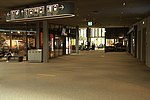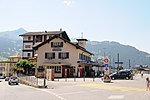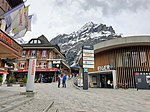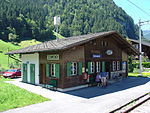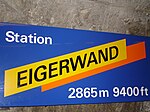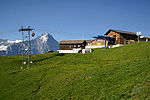Grindelwald Grund railway station

Grindelwald Grund is a railway station in the village and municipality of Grindelwald in the Swiss canton of Bern. The station is served by the Wengernalpbahn (WAB), whose trains operate from Grindelwald to Kleine Scheidegg. It takes its name from the Grund area of the village, in which it is located.WAB trains commence their journey at Grindelwald station, where they connect with trains of the Berner Oberland Bahn from Interlaken, and initially descend steeply to Grindelwald Grund station. At Grindelwald Grund they reverse and commence their ascent to Kleine Scheidegg, entering and leaving the station by its southern end. Depots and workshops are situated at both ends of the station.
Excerpt from the Wikipedia article Grindelwald Grund railway station (License: CC BY-SA 3.0, Authors, Images).Grindelwald Grund railway station
Grundstrasse,
Geographical coordinates (GPS) Address Nearby Places Show on map
Geographical coordinates (GPS)
| Latitude | Longitude |
|---|---|
| N 46.622777777778 ° | E 8.0233333333333 ° |
Address
Grundstrasse 61a
3818
Bern, Switzerland
Open on Google Maps

